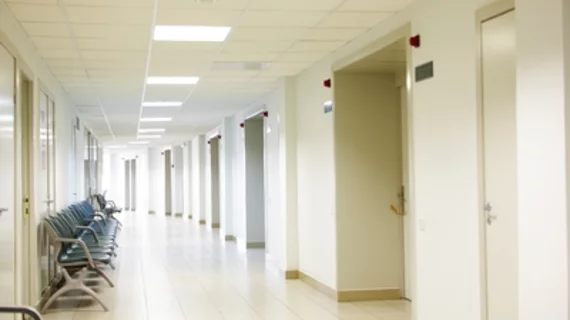Researchers develop first tool to predict readmission rates after TAVR
The first-ever risk score for predicting 30-day readmission rates in patients undergoing transcatheter aortic valve replacement (TAVR) can be easily folded into electronic medical records and inform perioperative care decisions, researchers reported at the Society for Cardiovascular Angiography and Interventions 2018 Scientific Sessions.
A 2016 study found about 18 percent of TAVR patients are readmitted within 30 days, while another report estimated hospital readmissions overall cost $41.3 billion in the United States.
In an effort to limit TAVR-related rehospitalizations, a group of researchers created a risk tool based on the following clinical variables: chronic kidney disease, end-stage renal disease on dialysis, anemia, chronic lung disease, chronic liver disease, atrial fibrillation, length of stay greater than five days, acute kidney injury and place of discharge. Each variable was assigned points based on how predictive it was likely to be for a hospital readmission; for example, end-stage renal disease on dialysis added 100 points to a patient’s risk score but anemia only added 20.
Massachusetts General Hospital cardiologist and lead author Sahil Khera, MD, and colleagues found their tool was moderately predictive of rehospitalization, with a c-statistic of 0.63. A c-statistic of 0.50 is no better than a coin flip, while 1.0 represents a flawless model.
In addition, the researchers identified a score of 212 or higher as being associated with a greater than 30 percent readmission rate. They tested their risk-scoring method on nearly 40,000 patients who underwent TAVR from January 2013 to September 2015, 16.2 percent of whom were readmitted.
“The creation of this tool and the results of the study are very assuring because it allows for better understanding how patients should be managed peri-TAVR,” Khera said in a press release. “By recognizing patients at higher risk of readmission, we can guide post-discharge care coordination and improve transitions of care to decrease readmission, improve quality of life, reduce healthcare costs and ultimately impact mortality rates.”

